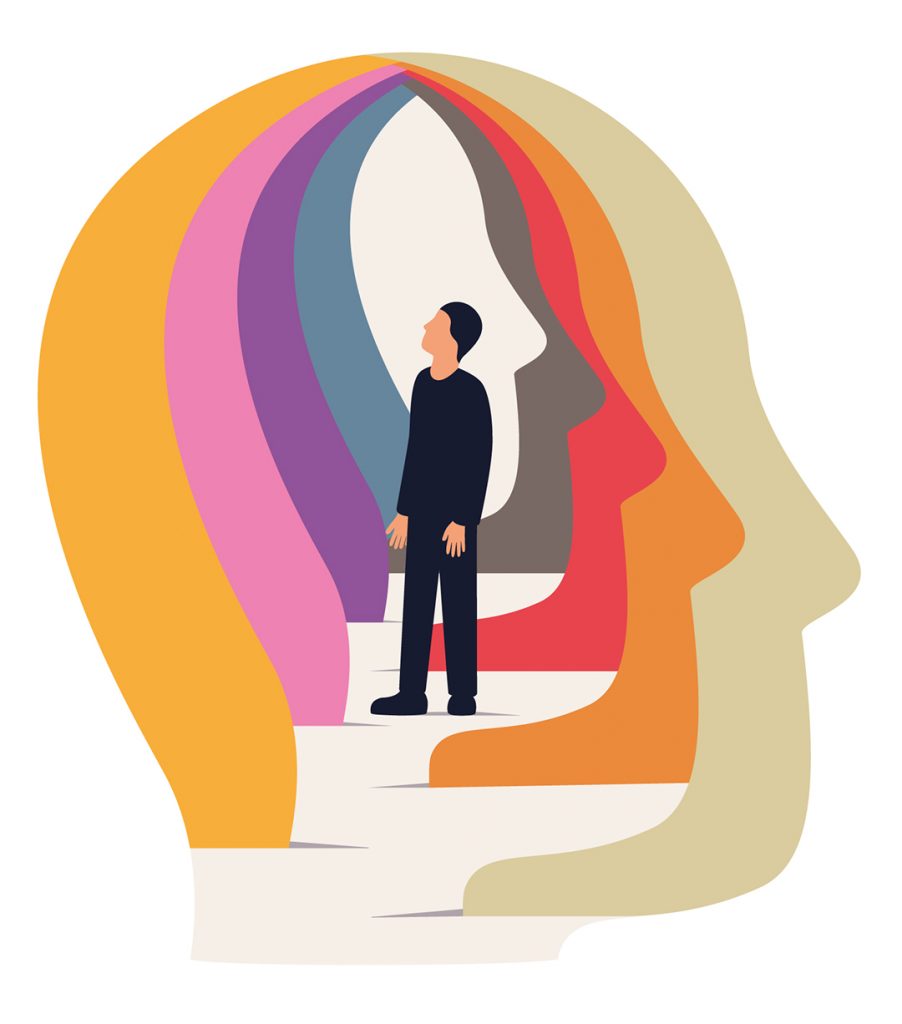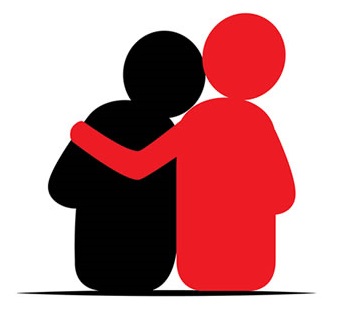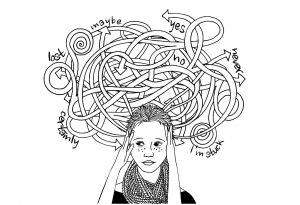10 Myths About Autism

Just over forty years ago, autism was first recognized as a distinct diagnosis in the DSM-III. Since then, awareness of autism has become widespread among the public and thankfully most of this has been respectful and positive. Unfortunately, there have also been unscientific myths about autism that exploit some people’s confusions and anxieties. These contribute to negative stigma and make it harder for autistic people to truly be understood and flourish in society. Have you fallen prey to any of these myths? Here are ten of the most destructive myths about autism.
1) The epidemic myth

Here’s a fun fact: In the past ten years, we’ve discovered more planets outside our solar system than in the rest of history combined (NASA Exoplanet Science Institute, 2021). Obviously, they were already there and we just got better at detecting them. But imagine if someone looked at the discoveries and said there was an “epidemic” of new planets being created! Silly, right? There’s an equally strange misconception about a so-called “autism epidemic”. Over the years, awareness of autism has increased dramatically among health professionals, authorities, schools, parents and the media. Autistic children who were previously overlooked are now getting correctly diagnosed, leading to growing estimates of the autistic population. Initially, 1 in 150 American children were estimated to be on the autism spectrum but now the estimate is 1 in 59, which is closer to reality. An anxious mind without a full understanding might see this increase and jump to the illogical conclusion that something is spreading, but the only thing that’s spreading is knowledge! There’s an epidemic of awareness, recognition, respect, and support for autistic individuals, and that’s nothing to be anxious about!
2) The vaccine myth.

Have you ever seen someone make up completely fake data for an assignment? Sadly, even some professional scientists have fabricated data too. In the late 1990s, a personal injury lawyer pursuing a case against a vaccine manufacturer funded a fraudulent study to discredit the vaccine. This study was led by Andrew Wakefield, who fabricated medical histories for some children who had received the vaccine mentioned in the lawsuit. In reality, most of the children had autistic traits at a completely different time from the vaccination and some of them didn’t even have autism at all, but Wakefield manipulated or completely invented their medical histories to suggest a false connection between autistic traits and the vaccine. Some parents of autistic children then fell prey to a type of mixed thinking called “confusing correlation with causation”. Autistic traits usually become noticeable in childhood and vaccination is also common in childhood. Parents who already had the fraudulent suggestion in their minds falsely assumed a causation between the two events just because they happened at a similar time, when it was actually a coincidence and would have happened anyway. Over the past twenty years, every researcher around the world who has investigated rates of autism has found no difference between vaccinated and unvaccinated children. There’s not a single study to back up the myth other than Wakefield’s original study which was investigated by the U.K.’s General Medical Council, declared to be fraudulent and retracted.
3) The parenting myth.

Have you ever heard the saying, “when all you have is a hammer, everything looks like a nail”? Before there was robust evidence about the causes of autism, some people came to completely baseless conclusions based on their personal preoccupations. In 1967, school director Bruno Bettelheim was interested in the social isolation of his autistic pupils and made a bizarre comparison with the emotional detachment he witnessed when he was a prisoner in a Nazi concentration camp. Obviously, these two situations are light years apart and people can be socially isolated for many different reasons. However, Bettelheim was convinced of his own baseless idea and wrote a book suggesting that a lack of affection created autism itself. This suggestion had absolutely no evidence but some families who were confused or anxious about an autism diagnosis found it natural to latch onto a false explanation that had an easy blame attached. Now that we know more about the causes of autism, we can safely say that “blame” doesn’t come into it. The scientific reality is that autism comes about from a variety of genetic and prenatal factors. Parents of autistic children are already under a lot of pressure to do the “right” thing and they don’t need an extra stigma on top of that.
4) The cure myth.

Temple Grandin, one of the most prominent animal scientists in the world, has emphasized that her autism is directly responsible for her success in the field. Autistic traits like hyperfocus, attention to detail and unique perspective are benefits for us to nurture. Unfortunately, some have a misguided focus on only the difficulties and a misunderstanding of medical terms like “cause”, “symptom” and “support”. This flawed framing has sometimes led to an inappropriate borrowing of the term “cure”, but there’s nothing to “cure”! Families experiencing stress when raising autistic children can latch onto false hopes. The nature of autism is a permanently different structural wiring of the brain that couldn’t and shouldn’t be eliminated. The lives of autistic people are definitely filled with challenges, but this is caused by a lack of genuine understanding and support for autistic traits, not necessarily by the traits themselves.
5) The savant myth.

Have you ever questioned your own worth and abilities from time to time? Autistic people are no different. Media portrayals of autistic individuals try to create a positive impression, and we’re glad about that. However, these intentions can actually backfire if the portrayals are too skewed compared to reality. Excessive focus on those with savant abilities, such as exceptional mathematical skills, can disregard and devalue those who don’t have such abilities. As we mentioned with the case of Temple Grandin, the real benefits of autism come from unique perceptions. The autistic mind has a heightened awareness of certain patterns and details, but these don’t always appear in dramatic or extreme ways. Autistic people have reported feeling judged when their abilities don’t match unrealistic expectations.
6) The empathy myth.

On any list of autistic traits, communication and emotion will be mentioned. Unfortunately, early researchers only saw the most extreme cases and got the wrong idea about the seemingly “flat” tone of voice and facial expressions. This led to continued misunderstandings about how autistic people feel empathy. Research shows that empathy actually has two components. “Cognitive empathy” is the ability to understand another person’s thoughts, desires and beliefs. “Affective empathy” is the drive to respond to another person’s emotional state. On average, autistic people demonstrate a lower cognitive empathy than control groups, but the affective empathy is the same. In other words, autistic people always care about what you’re feeling, but they don’t always recognize what emotion you’re feeling or why. The link between emotional feelings and emotional expressions can be disconnected in autistic people, so when they do respond to another person’s emotions, the results can appear flat or unaffected on the outside. Be assured, they may be feeling a lot on the inside!
7) The behavior myth.

Were you ever thrust into a completely unfamiliar setting as a child? The results can be stressful for anyone, and autistic people are no exception. A lack of understanding about autistic stress responses has led to continued misconceptions about what these behaviors really mean. In the ignorant early days of autism research, autism was mistakenly thought to be a variation of schizophrenia and defined by negative behaviors. Some people can be anxious about unfamiliar behaviors and demonize what they don’t understand. We now understand that autistic people are likely to have other conditions like sleep problems, anxiety and depression, to be overwhelmed by their surroundings, or to have difficulties communicating their wants and needs. This leads to constant stress and frustration which can manifest in unhealthy and unpredictable ways. Don’t be fooled; the real challenge of autism isn’t the outward appearance of behaviors, it’s the underlying friction between the individual and a stressful environment.
8) The friend myth.

Making new friends can be tough, right? For those who find it really tough, there can be a temptation to just give up. This kind of social isolation can give off a misleading impression that is out of tune with their real desires. The misconception that autistic people don’t want friends has led to a self-fulfilling prophecy where others don’t reach out to autistic people because they assume it will be unwanted. In reality, many autistic people desire for social relationships, but they find it challenging to maintain stable, high-quality friendships. Even worse, a majority of autistic adults have reported that their childhood interactions included traumatic events, exclusion and bullying, which can lead to self-isolation out of fear. Autistic people feel loneliness like everyone else, but creating meaningful connections requires supportive friends with a true understanding of autistic differences and needs.
9) The intimacy myth.

If making new friends is tough, finding a partner is even tougher! There’s a similar misconception to the previous one that can lead to even more ignorance of autistic peoples’ wants and needs. The misconception that autistic people aren’t interested in intimate relationships is another form of self-fulfilling prophecy. Unfortunately, some parents of autistic children who face daily challenges can be anxious about the future and be in denial that they will become adults with even more challenges. They can deliberately ignore any possibility of intimate relationships as a way of insisting that they will be children eternally. By refusing to give them any awareness or guidance, these parents set them up for failure and sabotage any possibility of adult relationships, which gives off the wrong impression. In reality, autistic people desire intimate relationships like everyone else, but they are exhausted and confused by the complex expectations and interactions involved. The uncertainties can be overwhelming and can also lead to withdrawal and self-isolation.
10) The life trajectory myth.

Charities aimed at helping autistic individuals often emphasize the most sympathetic cases. While this practice is well-intentioned, it can lead to some people getting the wrong idea. If I asked you to picture the typical autistic person in your mind, what kind of person do you envision? Is it a young child? Although children can be autistic, there’s a false impression that only children can be autistic, which leads to the misconception that autism can be “outgrown”. This false impression is caused by the “availability heuristic”, a mental shortcut where people think that more memorable cases are more typical or important. In reality, autism can be found across the entire life span, but adult cases are not publicized as often as childhood cases. This affects funding and adds to the challenges of autistic people growing up, as they often become ineligible for support services once they become legal adults. But even when support goes away, autism doesn’t, as it is a core part of a person’s being.
Outro
There you have it, ten myths about autism. The next time you see a claim about autism, pause for a second and reflect on whether it might be a misconception before deciding to accept it or not.
Even better, like and share this article to help spread correct and respectful knowledge about autism in society. Research shows that “pre-bunking” misinformation is more effective than “debunking” it, meaning that it’s best to spread corrections throughout the public before the misconceptions reach them. You can help us with that!
References
Bennett, M., Webster, A. A., Goodall, E., & Rowland, S. (2019). Life on the Autism Spectrum: Translating Myths and Misconceptions into Positive Futures. Springer.
NASA Exoplanet Science Institute. (2021). NASA Exoplanet Archive. https://exoplanetarchive.ipac.caltech.edu/cgi-bin/TblView/nph-tblView?app=ExoTbls&config=PS&constraint=default_flag%20%3E0





Responses